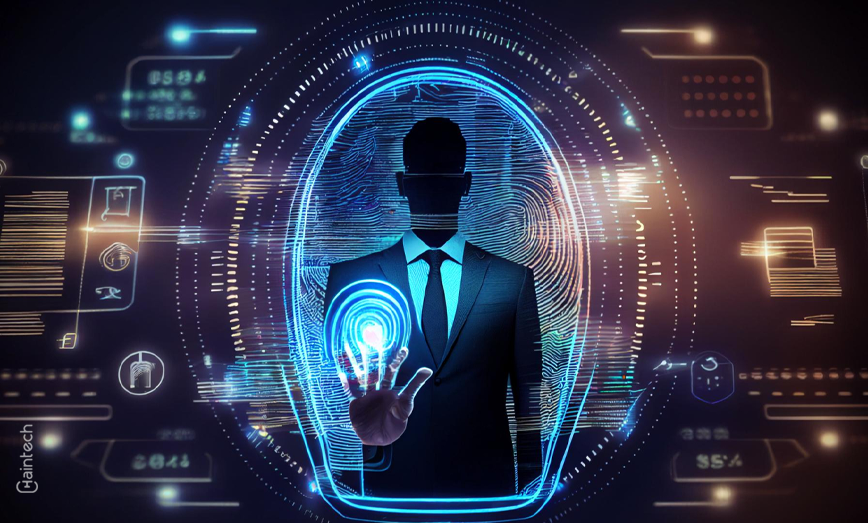The Untapped Potential

Exploring the Intersection of SSI, Data Correlation, and Blockchain in the Fight Against Cybercrime
As technology continues to advance at an unprecedented rate, so does the threat of cybercrime. With the increasing number of online transactions and the vast amount of sensitive data being stored digitally, it has become imperative to find innovative solutions to combat these ever-evolving threats. In this article, we delve into the untapped potential of Self-Sovereign Identity (SSI), data correlation, and blockchain in the fight against cybercrime, highlighting their intersection and the promising possibilities they bring to the table.
Self-Sovereign Identity (SSI) — Empowering Individuals and Protecting Information
What is SSI?
Self-Sovereign Identity (SSI) is a paradigm shift in the way we handle identity online. It empowers individuals with control over their own personal data and allows them to selectively disclose specific information to third parties while protecting their privacy. SSI eliminates the need for centralized identity authorities and introduces a decentralized approach that gives individuals the ability to manage and verify their identities.
The Untapped Potential of SSI
Enhanced Privacy: With SSI, individuals gain greater control over their personal information, reducing the risk of data breaches and identity theft. This decentralized approach ensures that individuals have the final say in how their data is shared and used.
Trustworthy Interactions: By utilizing cryptographic technologies, SSI enables secure and verifiable interactions between individuals and organizations. This fosters trust in online transactions, eliminating the need for intermediaries and reducing the risk of fraud.
Seamless User Experience: SSI has the potential to provide a seamless user experience, allowing individuals to easily manage and present their identities across various platforms. This eliminates the need for repetitive data entry and improves overall convenience for users.
Data Correlation — Connecting the Dots for Proactive Cybersecurity
Understanding Data Correlation
Data correlation involves analyzing and connecting different data points to uncover patterns, relationships, and potential threats. It plays a crucial role in proactive cybersecurity, enabling organizations to stay one step ahead of cybercriminals by identifying potential vulnerabilities and mitigating risks before they can be exploited.
Leveraging Data Correlation for Advanced Cybersecurity
Early Threat Detection: By correlating various data sources, organizations can detect early warning signs of cyber threats. This allows for timely response and prevention of potential attacks, reducing the impact on both individuals and businesses.
Contextual Analysis: Data correlation enables organizations to gain a holistic view of their digital environment. By analyzing disparate data sets, they can identify patterns that indicate malicious activities and gain insights into the tactics, techniques, and procedures used by cybercriminals.
Proactive Risk Mitigation: By detecting patterns and anomalies in real-time, data correlation helps organizations identify potential vulnerabilities and address them before they can be exploited. This proactive approach enhances overall cybersecurity posture and reduces the likelihood of successful cyberattacks.
Exploring the Potential of Blockchain Technology
Harnessing the Power of Blockchain
Blockchain, widely recognized for its application in cryptocurrencies like Bitcoin, holds immense potential beyond the financial realm. Its decentralized and immutable nature makes it an ideal candidate for strengthening cybersecurity defenses and addressing the challenges posed by cybercrime.
Key Advantages of Blockchain in Cybersecurity
Enhanced Data Integrity: With blockchain, data is stored in a decentralized and tamper-proof manner, ensuring its integrity and preventing unauthorized modifications. By eliminating the need for trust in intermediaries, blockchain enhances the security of critical data.
Immutable Audit Trails: Blockchain maintains an immutable record of all transactions, providing a transparent and auditable trail. This accountability discourages malicious activities and supports forensic analysis in the event of a cyberattack.
Secure Identity Verification: Blockchain-based identity systems enhance the security and privacy of personal information. By removing centralized authorities, it becomes exceedingly difficult for cybercriminals to manipulate or compromise identity data.
The Intersection: Empowering Cybersecurity Through SSI, Data Correlation, and Blockchain
The combination of Self-Sovereign Identity (SSI), data correlation, and blockchain technology presents a compelling opportunity to revolutionize cybersecurity practices. By leveraging the strengths of each component, organizations can take a proactive approach to protect their digital assets and individuals can regain control over their personal information.
Strengthened Identity Management: SSI, when combined with blockchain, enables secure and decentralized identity verification. This empowers individuals to assert their identities with confidence while minimizing the risk of identity fraud.
Proactive Threat Intelligence: Data correlation, integrated with blockchain, equips organizations with an in-depth understanding of potential threats and attack vectors. This allows for proactive risk mitigation and the ability to respond swiftly to emerging cyber threats.
Immutable Cybersecurity Infrastructure: The integration of SSI, data correlation, and blockchain creates an infrastructure that is highly resilient to cyber attacks. By combining the trustless nature of blockchain, the privacy-preserving features of SSI, and the analytic power of data correlation, an ecosystem is established that sets new standards in cybersecurity.
In conclusion, the untapped potential lies at the intersection of Self-Sovereign Identity (SSI), data correlation, and blockchain. Embracing these technologies opens new doors to combatting cybercrime more effectively and creating a safer digital environment for individuals and businesses alike. As we continue to explore and harness these technological advancements, the fight against cybercrime will gain momentum, forging a path towards a more secure and trusted future.









